Romanes
2009/10, HD 16:9, 16 min, colour, stereo, engl. subtitles
Workshop leader: Antonello Casalini
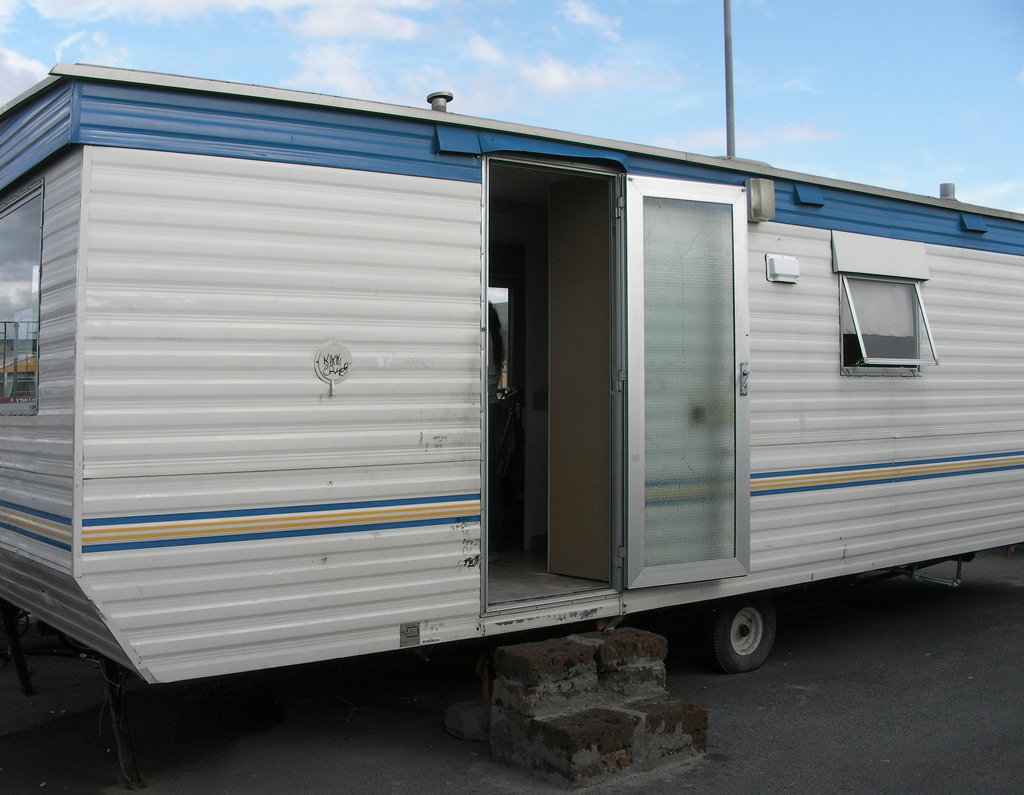
© Video stills
"Romanes entstand nach einem Videoworkshop mit jugendlichen Roma und Sinti in einem Roma-Camp am Stadtrand Roms, in dem die Jugendlichen sich selbst zu ihrem Leben und Wünschen vor dem Hintergrund einer durch Ausgrenzung bestimmten gesellschaftlichen Position befragten." (Geri Weber)
=werk=30=f27
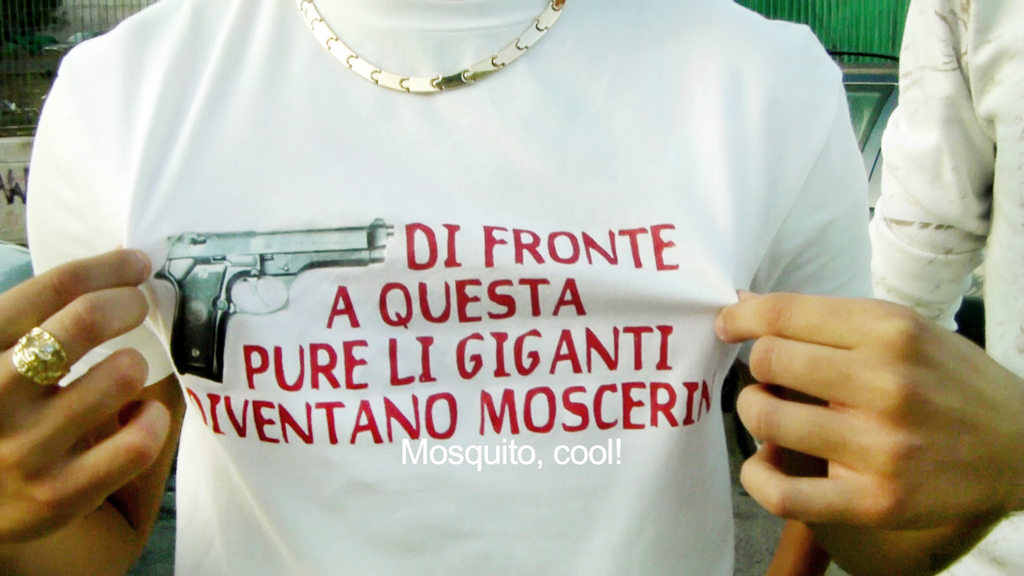
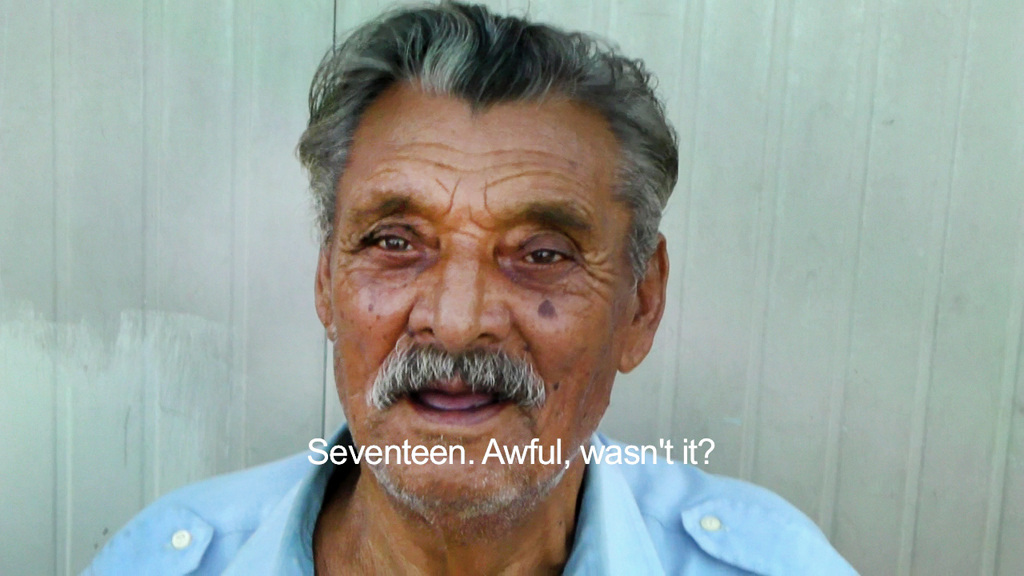
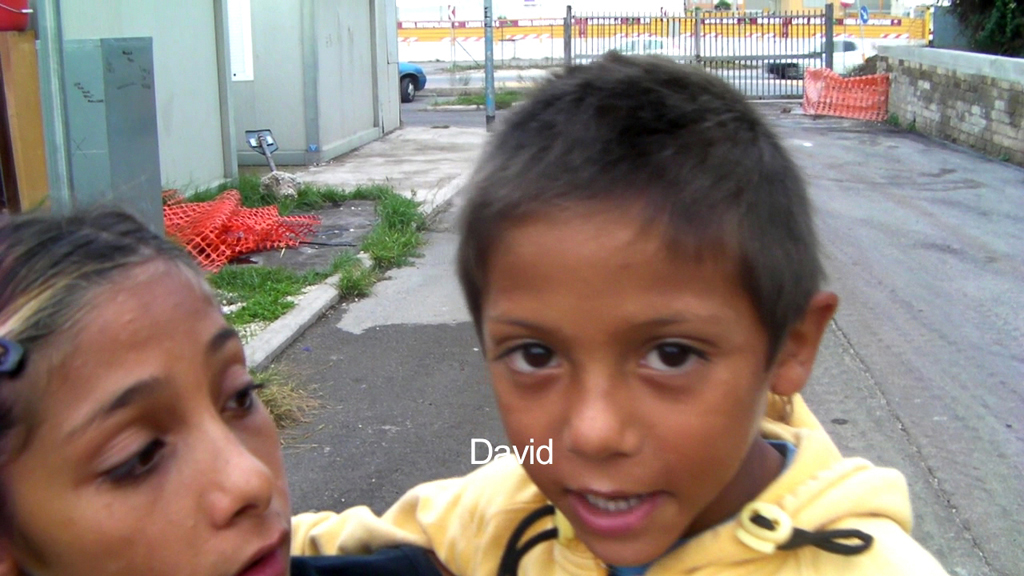
© Video stills
Giants and Mosquitoes
Salzburger Kunstverein - Ausstellungskabinett
5. Mai – 10. Juli 2011
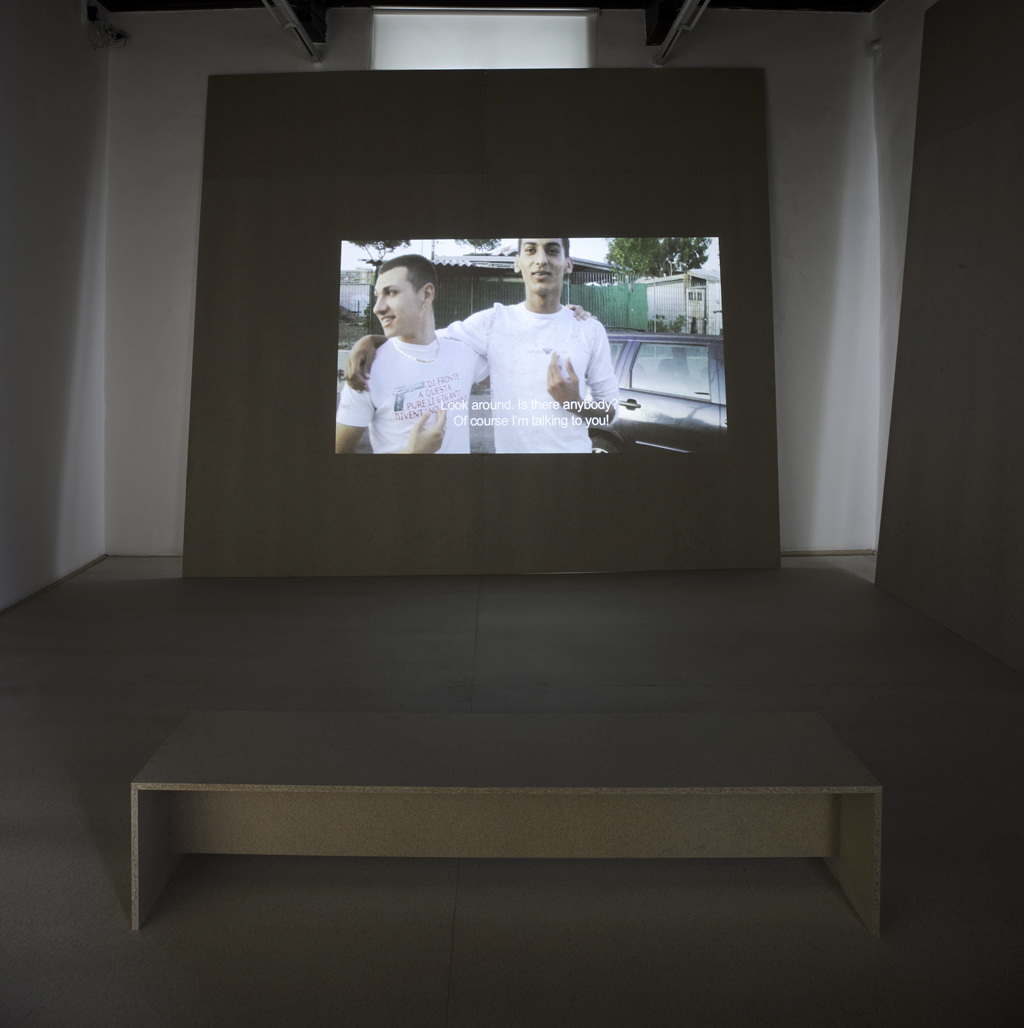
© Salzburger Kunstverein, exhibition view: Romanes, Salzburger Kunstverein, 2011.
Photo: Andrew Phelps
Annja Krautgasser zeigt in ihrer Ausstellung „Giants and Moscitos“ dokumentarische Einblicke in das Leben der politisch wie gesellschaftlich stark ausgegrenzten Minderheit der Roma in Italien. Zwei Videoinstallationen porträtieren Roma-Jugendliche aus dem Roma-Camp „Villaggio Attrezzato“ am Stadtrand Roms, deren Alltag sich zwischen dem Wunsch nach Normalität und der Suche nach ihrem Platz in der Gesellschaft bewegt. Für den Betrachter stellt sich die Frage von Realität und Fiktion und der damit verbundenen Gratwanderung zwischen vorgegebenen Rollenmodellen und Vorurteilen.
CELLA
Strukturen der Ausgrenzung und Disziplinierung
Complesso Monumentale di San Michele a Ripa, Rom
06. - 28.11.2009
A project by the Institute of Art History, University of Innsbruck
Curated by Christoph Bertsch und Silvia Höller
Participants: Ingmar Alge, Angelo Aligia, Matthew Barney, Gottfried Bechtold, Fatima Bornemissza,Tania Bruguera, Lucilla Catania, Thomas Feuerstein, FLATZ, Rainer Ganahl, Morto da Goffezza, Morto da Goffezza Il Giovane, Marcel Hiller, Zenita Komad, Jannis Kounellis, Annja Krautgasser, Maria Kristof, Carla Mattii, Yves Netzhammer, Giuseppe Penone, Pietro Perrone, Alfredo Pirri, Platino, Christine Prantauer, Cloti Ricciardi, Daniel Richter, Pipilotti Rist, Gerwald Rockenschaub, Heidrun Sandbichler, Eva Schlegel, Gregor Schneider, Esther Stocker, Milica Tomic, Christoph Wachter & Mathias Jud, Lois Weinberger, Margret Wibmer, Ingrid Wildi, Yoonsook
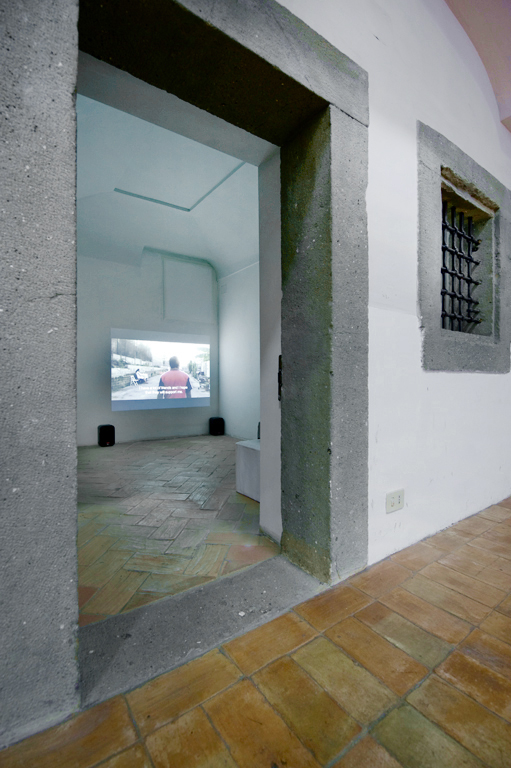
© Exhibition view: Cella, Complesso Monumentale, Rome, 2009. Photo: Martin Vandory
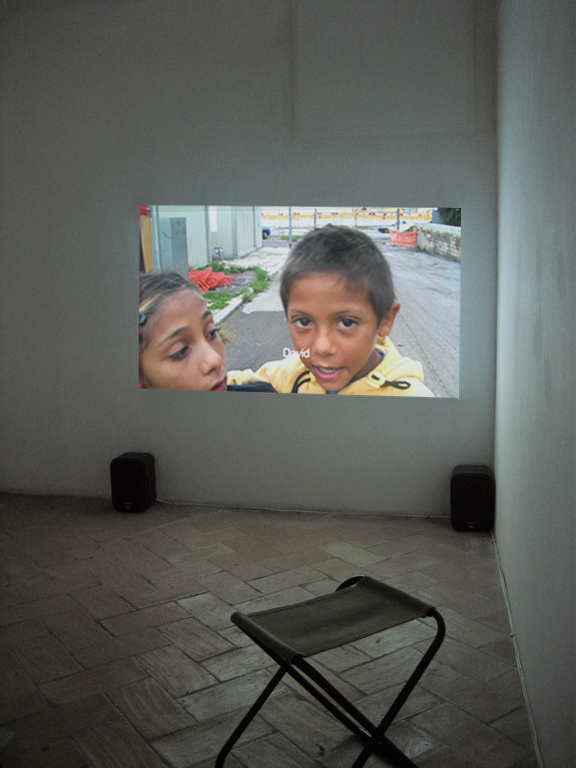
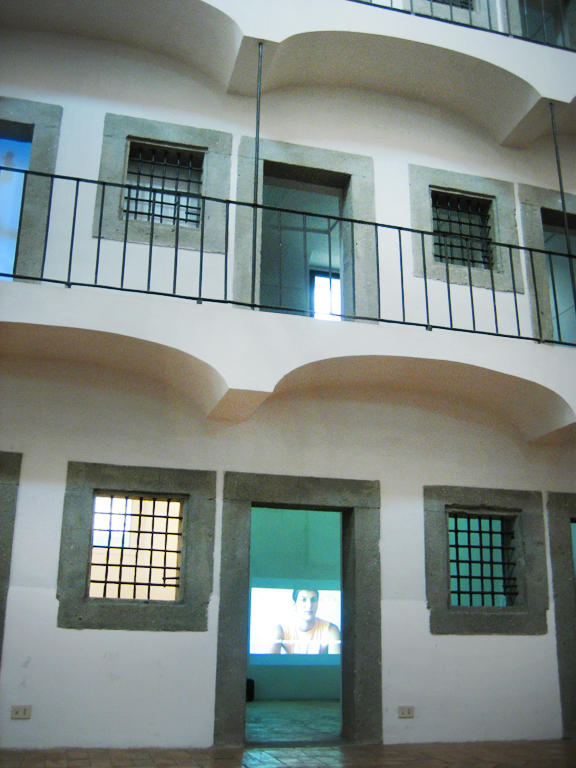
© Exhibition view: Cella, Complesso Monumentale, Rome, 2009
VIDEO
: RomanesDeutschEnglish
Exhibitions: =werk=30=f15
Festivals:
=werk=30=f16
No:
=werk=30=f1
Video distribution:
sixpackfilm
Supported by:

Giants and Mosquitoes
Salzburger Kunstverein - Ausstellungskabinett
05.05. – 10.07.2011
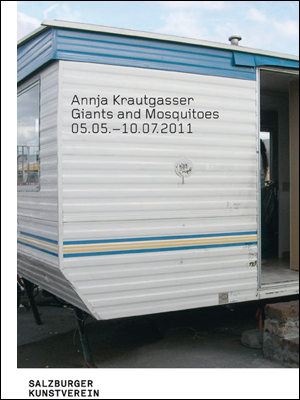
© Salzburger Kunstverein, Einladungskarte
My introduction begins with what we can see, the elements leading into the exhibition and the composite visual elements: the invitation card shows a clearly cropped photograph of a caravan and the title of the show, Giants and Mosquitoes. The image that does not reappear anywhere in the exhibition itself. In contrast, there is a large-scale projection of the video Romanes; another video (REMAKE Romanzo Criminale) is being shown on the small portable player with headphones. The dialogues are transcribed and marked appropriately in the two drawings Rollenspiel I and II in stencilled lettering, i.e. not merely highlighted and repeated, but also lent spatial depth with the lettering.
The entire exhibition space is clad in panels, two large ones are leaning on the wall in front of the windows, they call to mind temporary mobile architecture. In contrast, the floor and, above all, the bench call upon the visitor to sit in the space, to engage with it. This design is not arbitrary, nor is it merely to facilitate darkening the space for the projection. It can be understood more as a metaphor for the engagement with the subject matter being addressed here: as "dislocating localisation" — a pairing of terms with which Giorgio Agamben characterised the "camp".
At the focus of analysis/visualisation are youths from the Villaggio Attrezzato Romani camp in Rome, Italy. In 2009 Annja Krautgasser was invited by Christoph Bertsch and Silvia Höller to participate in the exhibition project Cella — Strukturen der Ausgrenzung und Disziplinierung. The show was held in the Casa di Correzione, a building with a cell-shaped floor plan, built in the early 18th century as a prison for young offenders, and still in-use until the 1970s.
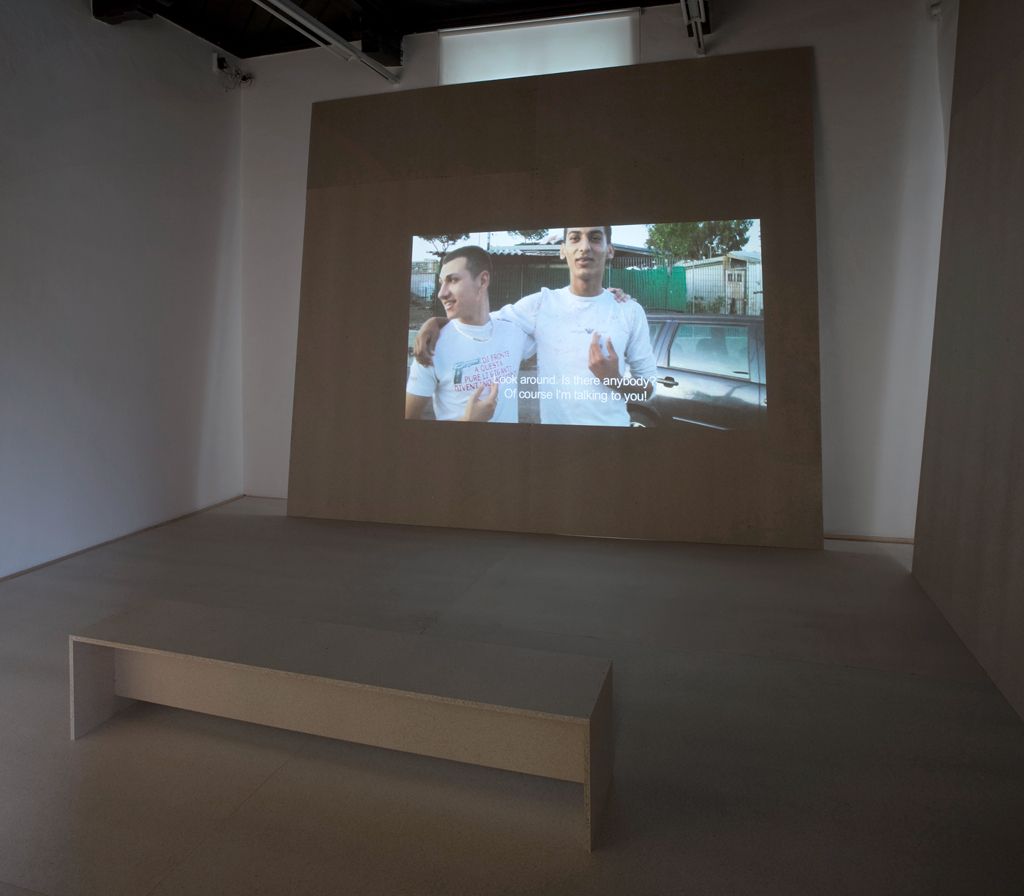
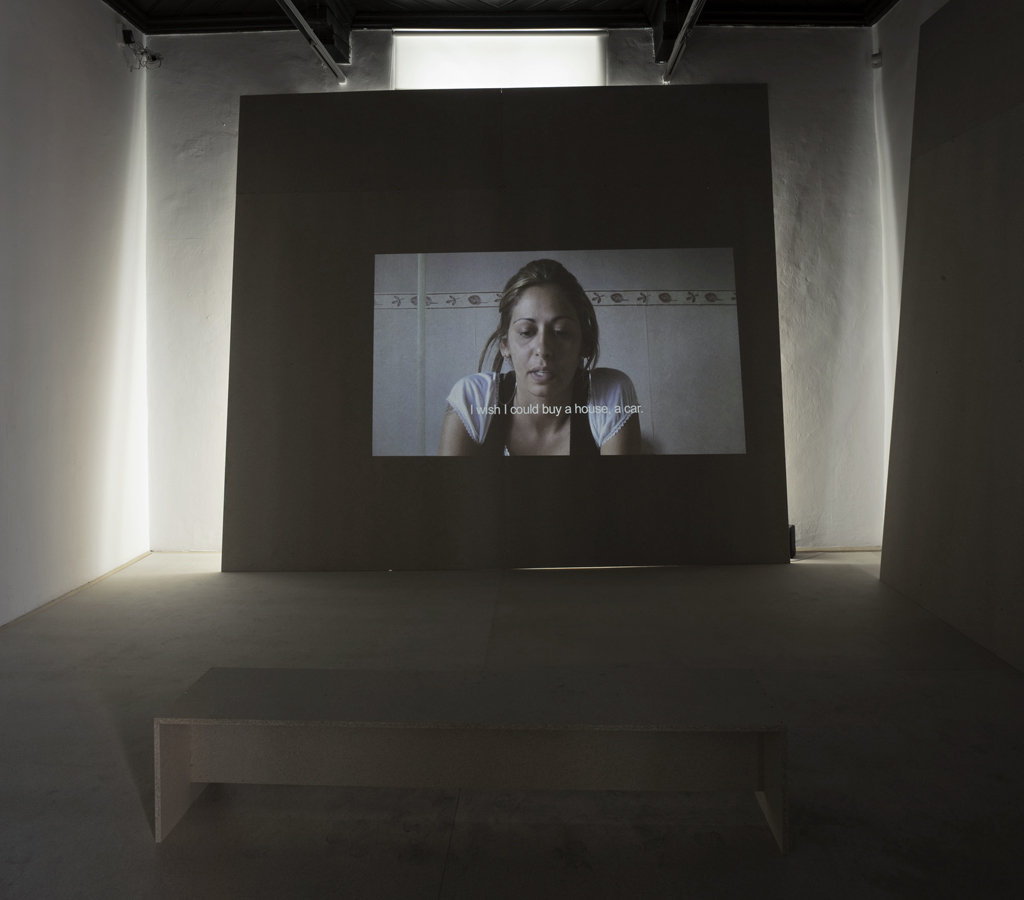
© Salzburger Kunstverein, Ausstellungsansicht: Romanes, Salzburger Kunstverein 2011.
Foto: Andrew Phelps
Annja Krautgasser used her private contacts to social workers to be able to hold a three-day workshop with youths at the camp, in the caravan shown on the card. She obtained five HD video cameras with the budget for the exhibition. Following an introduction to camera-use and techniques and brief exercises in speaking-to-the-camera and interviewing each other, the participants were able to plan a portrait of the camp and portraits of themselves. The artist edited Romanes from the almost four hours of video footage. An entirely different interview language emerges, a far more passionate treatment, than we are familiar with from conventional interviews with experts, the interviewer is also deeply involved, too — almost a sacrilege according to interview convention as the authenticity of the statement is, if not challenged, then at least given added momentum. There is obvious role-playing with improvised staging and props; although the footage gives the young people a voice, faces and bodies, but also the space allotted to them. A small pan shows several CCTV cameras on a mast, so the camp is also under permanent surveillance. Although the two watchmen interviewed, so we hear, share just one name and the same number of years in the job. They are not stylised as the other/as strangers in the narration, nor are the CCTV cameras — both instruments of control belong to normality inside the camp, they are part of the youths' everyday experience. In contrast, the outside is imagined in terms of the desire for "a normal social life", which includes having a house, a car and family.
…Annja Krautgasser has a new update on the extremely complex area of 'speaking of' and 'speaking for' somebody else, by delegating the making of the portraits to those who are themselves being portrayed. I am almost certain that she, having already frequently used films by Godard in her works, knows his film Tout va bien and the scene where a female worker from an occupied sausage factory is interviewed by a very eager Jane Fonda — we see them both, but the worker remains silent however hard the reporter tries. A voice from off adds thoughts from a worker to the scene, among them also the thought that everything she has to say would anyway only confirm existing prejudices among the public.
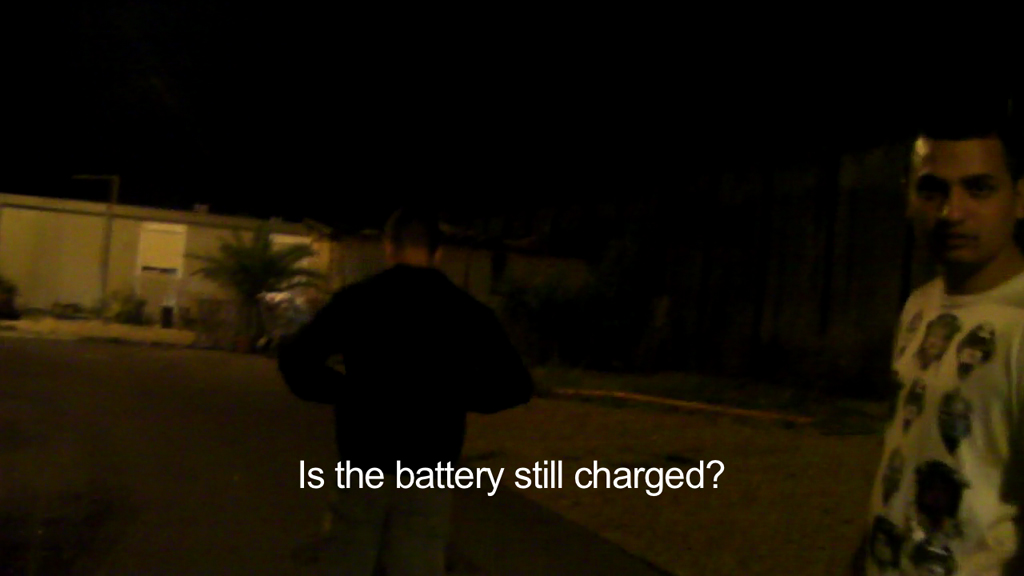
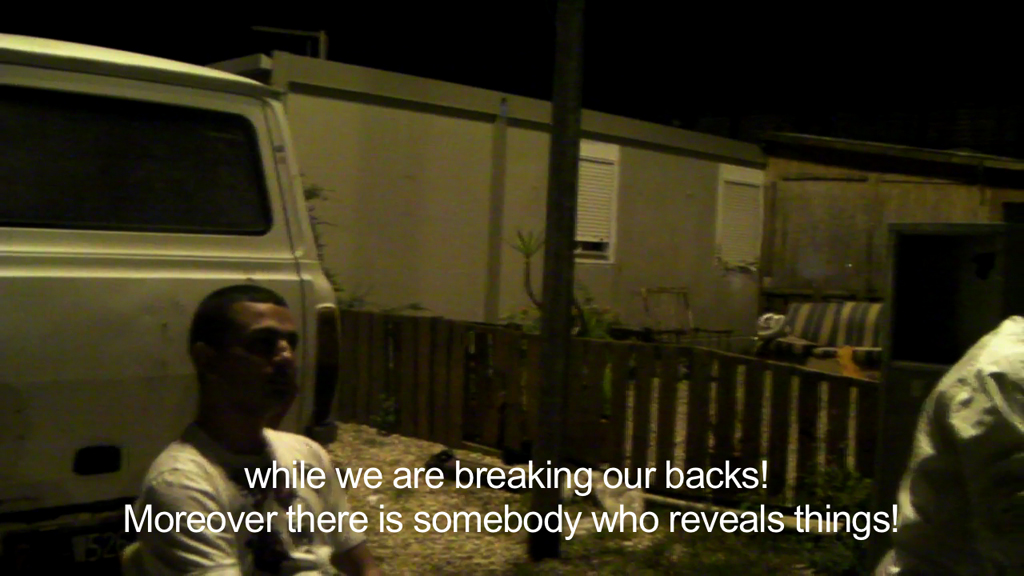
© Videostills Remake Romanzo Criminale
This may be most clearly shown in the second video: Remake Romanzo Criminale. The youths shot a gangster movie overnight on their own initiative during the three days of the workshop that apparently authentically illustrates their own wishes and aspirations. This remake is based on a cult novel published in 2002 where a judge fictitiously documents the career of the Banda della Magliana, who began with petty misdemenaours in the 1970s and '80s before being discovered and instrumentalised by the Mafia and making the town unsafe with kidnappings, blackmail and murder. The book was made into a film by Michele Placido in 2005.
What does the Romani youths' remake show us? What does it tell us, and how did they have the idea to stage these scenes? Dreaming about the way the Magliani gang so quickly acquired money and power, so easily and enjoyably? Up and away, out of the ghetto, footloose and fancy-free, not having a regular job but living THE Life? Is that the life that we have always ascribed to gypsies?
We should not only consider the 'given of we-can-be-seen' but also the 'how' of what we ourselves see and hear. The longer one thinks about them, the more strongly the individual interview passages start to develop a dynamics of their own. From here, for example, one can reflect differently on why the question of whether she/he's got a job is so often posed in Romanes. As an internalised arefusing-to-work stereotype? Or, actually as documentation of the fact that even young Romani have regular jobs, or at least want to have work, just like everybody else? The way that the young Romani portray themselves is filtered by the system of hegemonial representation just as the way we perceive this portrait is. The youths knew that their video footage was to be used in the exhibition, and they knew that this would give them a kind of cultural visibility. But they also probably suspected that this would not necessarily lead to better political representation. It would be rash to think that the youths were behaving with an awareness that ultimately they only had a choice between play-acting and maintaining silence. However my perception of the visual and narrative treatment in the two videos, both with the playful approach to the portrayals and the silence about basic issues, in preparation for the youths' lives, is less bold.
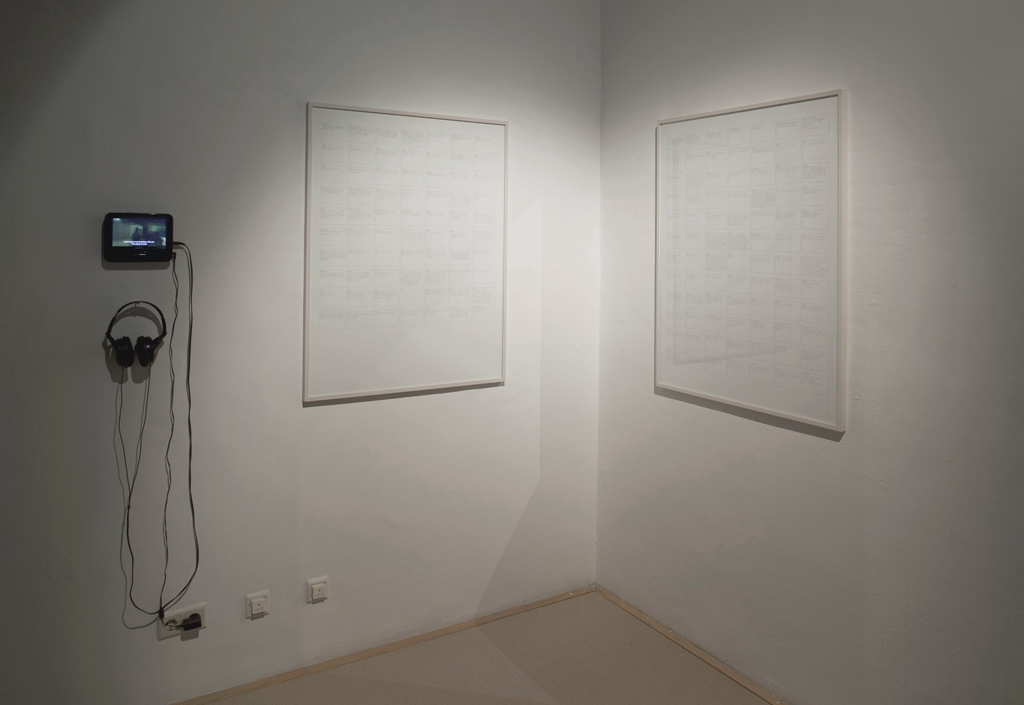
© Salzburger Kunstverein, Ausstellungsansicht: Remake Romanzo Criminale und Rollenspiel I + II, Salzburger Kunstverein, 2011. Foto: Andrew Phelps
Interviews are increasingly being used strategically in contemporary art, and we expect these interviews to differ from the ones found in investigative journalism for documentaries in the cinema and on TV by addressing and engaging with, inter alia, the construction of statements and the way they have been generated in film. One way to do this is to contextualise the situation using different materials, or even by having a setting for the presentation that raises — and leaves space for — other questions, as is the case here.
(Hildegard Fraueneder)
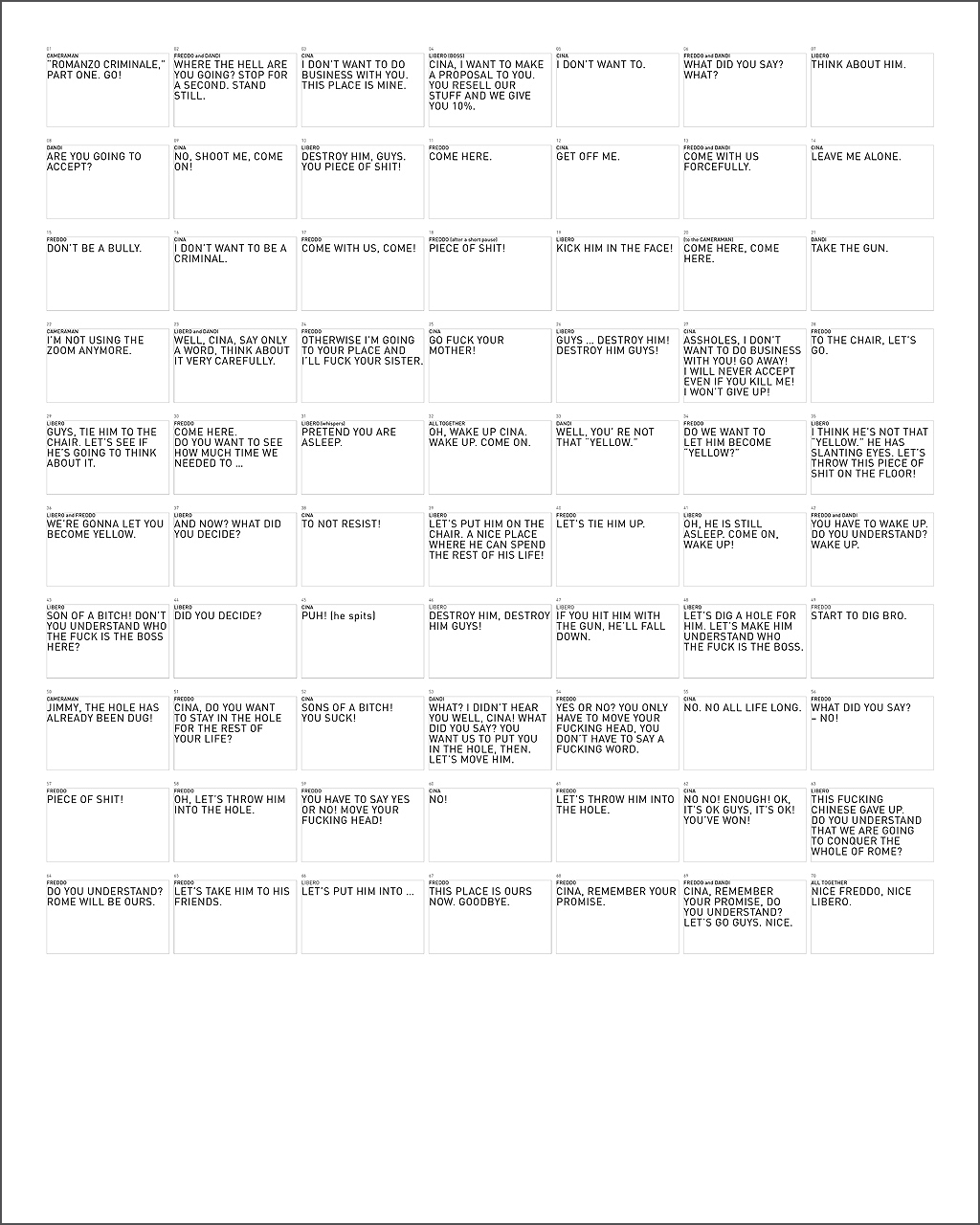
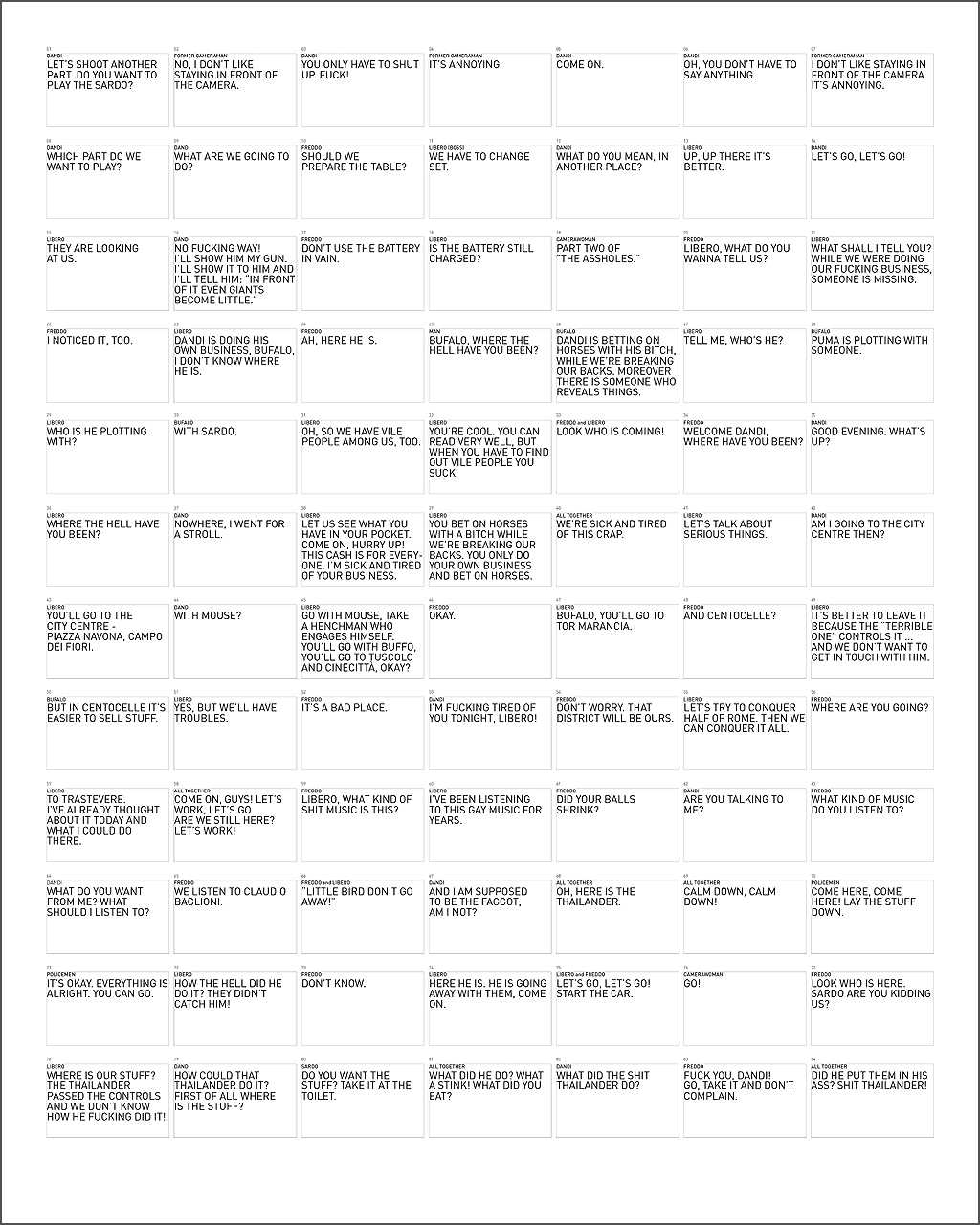
© Rollenspiel I + II, Vorlage